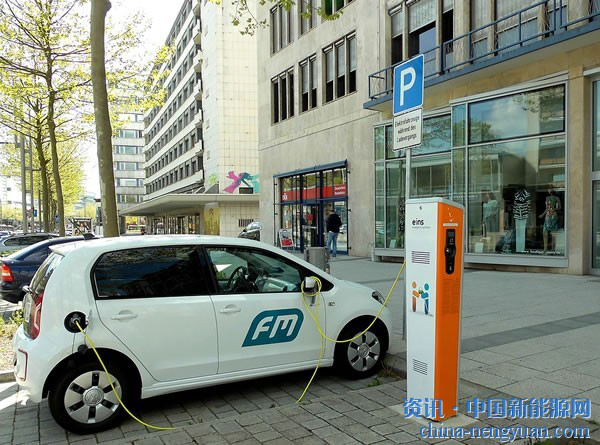To activate the rural new energy automobile market, we must solve the "mileage anxiety"
After deciding to buy a car, Mr Yan ran back and forth several times from Gaoming's home to Foshan's central city these days. In Foshan GAC New Energy 4S Store, he learned about various models from sales consultants with great interest. He runs a breeding garden, because he often has to travel to different places, so he buys a car mainly for convenience. I heard that there are many subsidies for new energy, so I'll take a look.
In the new round of the policy of automobile going to the countryside, Guangdong has included new energy vehicles in the scope of subsidies. For rural consumers like Mr. Yan, according to Guangdong's special campaign of going to the countryside in 2020, the purchase of new energy vehicles can enjoy a provincial financial subsidy of 10,000 yuan/vehicle, which is twice as much as the traditional fuel vehicles of 5,000 yuan.
Just a few days ago, the Ministry of Industry and Information Technology, the Ministry of Agriculture and Rural Affairs and the Ministry of Commerce jointly issued a notice to launch new energy vehicles to the countryside from July to the end of the year. The re-launch of the policy reveals that guiding and encouraging new energy vehicles to the countryside has become an important direction, and new energy vehicles are expected to open up a broad development space in rural areas.
However, under the existing infrastructure conditions, facing the "mileage anxiety", what is the real response of new energy vehicles in the rural market? Can new energy vehicles be used in rural areas? What are the new changes in rural residents' understanding of green travel?
Charging piles are still difficult to meet the demand
After watching many new energy vehicles, Mr Yan hesitated. The use cost of new energy vehicles is really low, but he lives in the countryside and has few charging piles. Although he likes new energy vehicles very much, he still has some concerns: "Running business often has to run long distances. If charging is inconvenient, the cruising range will not be satisfied."
Mr. Yan' s concerns are not unfounded, and such data seems to be confirmed-
According to the charging infrastructure plan of electric vehicles in Guangdong Province, in 2020, 1,490 charging stations and about 350,000 decentralized charging piles will be built in the province to meet the charging needs of about 410,000 electric vehicles in the province; The ratio of public charging piles to electric vehicles in Pearl River Delta is not less than 1: 5, and that in eastern Guangdong, western Guangdong and northern Guangdong is not less than 1: 7. However, the distribution of charging piles in the whole province is uneven, the polarization between Pearl River Delta and non-Pearl River Delta is serious, and the polarization between urban and rural areas is serious. The reporter found that there are only 37 charging piles in Zhanjiang and 53 charging piles in Yangjiang, and most of these charging piles are distributed in urban areas.
"At present, the construction of charging infrastructure in rural areas lags behind, and the conditions for large-scale promotion of new energy vehicles are relatively limited. For example, in Guangzhou, Conghua, Zengcheng and Panyu, there are almost no charging piles. In the rural areas of eastern Guangdong, western Guangdong and northern Guangdong, although China Southern Power Grid has built some charging piles in substations, it is far from enough to promote electric vehicles to the countryside. " Cai Qingwei, deputy of Guangzhou Municipal People's Congress and member of the Budget Committee of Guangzhou Municipal People's Congress, gave an example. "There is no shortage of rural power and land resources. The difficulty lies in the small number of new energy vehicles in rural areas, which has caused the low frequency of public charging of rural new energy vehicles and the difficulty of charging piles." Gao Haijun, senior vice president of Wanbang Charging Equipment Co., Ltd., said frankly that without investment prospects, enterprises will naturally not build.
"It is recommended to use the method of superimposing operating subsidies on the basis of construction subsidies to encourage private capital to enter the field of new energy vehicle charging pile construction and make continuous investment." Zhang Zhaoan, vice president of Shanghai Academy of Social Sciences, believes that in the construction of charging facilities, only by playing a set of "combination boxing" to subsidize charging pile enterprises to go to the countryside can all potential players in the chain be attracted.
At present, in order to speed up the development of rural regional markets, some car companies have introduced the discount of "sending charging piles when buying a car", and charging piles can be installed at home in areas without dealerships to meet the needs of rural consumers. "We also provide modes such as car charging and charging bags. Like data lines, it can be filled in a few hours. In this way, a charging pile is installed at home and a charging bag is placed on the car to ensure smooth travel." Chen Shumin, Marketing Director of Guangzhou Xinxing New Energy Sales and Service Co., Ltd. said.
The layout of rural service network is unbalanced
Similar to the charging pile layout, there is a key "roadblock" for new energy vehicles going to the countryside, that is, there are relatively few sales and service channels.
In the BYD 4S store in Qingyuan city, Mr. Wang specially came from Lianzhou to purchase BYD e2 which entered the subsidy catalogue. "It took me an hour to see the car from home. General fuel vehicles can be purchased, maintained and repaired at home, but new energy vehicles are not so convenient. " Mr. Wang said.
According to the reporter's visit, the sales network of new energy vehicles is mainly concentrated in Guangzhou and Shenzhen, and there are relatively few sales and service outlets of new energy vehicles in eastern Guangdong, western Guangdong and northern Guangdong. Take BYD's Qin EV model as an example. It has 16 distribution stores in Guangzhou, 20 in Shenzhen, 9 in Dongguan and 7 in Foshan respectively; In the east, west and north of Guangdong, there are two dealerships in Shantou, Heyuan and Maoming, and only one dealership in Qingyuan, Zhaoqing, Zhanjiang and Yangjiang.
Guangzhou Automobile New Energy has a similar situation, and more stores are set up in the Pearl River Delta region. Among them, there are 9 distribution stores in Guangzhou, 7 in Shenzhen, 3 in Foshan and 1 in Dongguan, Zhuhai, Zhongshan, Jiangmen and Huizhou. However, there are only one store in Shantou, Meizhou, Heyuan and Maoming, and there are no dealer stores in Zhanjiang, Shaoguan, Zhaoqing and Shanwei.
"Now GAC New Energy is also building dealerships in eastern Guangdong, western Guangdong and northern Guangdong, but if the sales volume is not large, it will join with other brands. If you set up a dealership in each prefecture-level city, consumers will buy less and the store will be difficult to operate. " Chen Shumin said.
How to solve the problem of sales channel service of new energy vehicles. Zhang Zhiyong, an auto analyst, believes that it is possible to borrow existing auto dealer outlets to cover more regional markets and meet the consumption needs of rural residents. At the same time, new energy automobile enterprises should accelerate the exploration of better financial service modes, enhance their support capabilities, cover more small and medium-sized cities and rural areas, and reduce the after-sales service radius and response time.
Product adaptability needs further "going to the countryside"
"I basically don't go far, occasionally go to the city to work, 40 kilometers one way, and 80 kilometers round trip. Now the battery life of electric vehicles can be basically met, and a' socket' can be used in the yard, which can save fuel." Through a friend's introduction, Mr. Chen of Yangjiang intends to buy a new energy vehicle to travel instead of walking, mainly considering the relatively low later expenses. However, after carefully comparing the catalogue of subsidies for cars going to the countryside, he basically gave up his thoughts, mainly because the price of cars is relatively high and there is not much cost performance.
The reporter combed and found that the guide price of new energy vehicles entering the catalogue of subsidies for cars going to the countryside in Guangdong was basically more than 120,000 yuan. For example, Guangzhou Automobile New Energy Ean S starts from 146,800 yuan, and SAIC Roewe Ei5 starts from 130,800 yuan after subsidies. According to the survey of China's electric vehicles in committee of 100, the rural consumers' car purchase budget is concentrated within 70,000 yuan. Among the 241 new energy passenger cars in China, there are few optional models that can meet this pricing demand, with 23.7% models below 100,000 yuan and only 16.2% models below 70,000 yuan.
"Rural consumers are sensitive to price. The price of new energy vehicles is generally higher than that of traditional vehicles. Ample consumers prefer to buy luxury brands in one step. To persuade rural consumers to buy, they must also let green consumption when new energy vehicles go to the countryside. Consciousness goes to the countryside and launches products that meet the needs of the rural market." Gao Haijun believes that in order for rural consumers to accept it, it is necessary to strengthen the experience, popularize and publicize new energy vehicles to individuals, and dispel the consumption concerns of rural residents. At the same time, it is suggested that official vehicles should take the lead in electrification, promote long-term operating subsidies by pure purchase, and government and enterprises should work together to popularize new energy vehicles.
"If fast charging to the countryside is effective, the demand of rural automobile consumption market, especially logistics, will be great. However, the solution of these problems depends on the government. If the government subsidy funds are in place, on the one hand, it subsidizes enterprises, on the other hand, it subsidizes consumers, which can effectively open up the blue ocean of rural new energy vehicles. " Cai Qingwei said.
Mr Zhang in Zhanjiang feels that the driving experience of new energy vehicles is very good, and rural areas are also very suitable for new energy vehicles. "However, the price of new energy vehicles is indeed relatively high. If there are inexpensive products, it should not be difficult to persuade relatives and friends around you to buy them." He speaks bluntly.
"In recent years, the number of cars in rural areas has increased from 9.9 in 2013 to 22.3 in 2018. By 2030, the number of cars in rural areas is expected to reach 160, and the total number of cars will exceed 70 million." Chen Qingtai, chairman of China Electric Vehicle committee of 100, said that the market demand to be developed is a key issue in the new energy vehicles going to the countryside. "In the future,' stock substitution' and' new addition' may form a market of 10 million electric vehicles in third-and fourth-tier cities and rural areas, and become an important driving force for China's sustained economic growth." (Source: Huizhou Daily)
LATEST NEWS
- Xi Jinping sent a congratulatory letter to the 2019 World New Energy Vehicle Conference 2020-11-24 17:42:36
- Prospect of charging pile construction under new infrastructure 2020-11-24 17:40:17
- "Replacement" of Electric Speed-up Charging Pile 2020-11-24 17:27:20
- Why is the future charging pile market of new energy vehicles predicted to be a "bull market"? 2020-11-24 17:21:50
- Promote the construction of charging pile facilities "three axes" 2020-11-24 17:18:05
- To activate the rural new energy automobile market, we must solve the "mileage anxiety" 2020-11-24 17:14:00


Hangzhou guokong electric power technology co., ltd Service hotline: 0571-81969856 / 0571-87973887Company address: 3/F, Building 1, Qianjiang Pentium Science and Technology Park, No.16 Xiyuan First Road, Xihu District, Hangzhou


